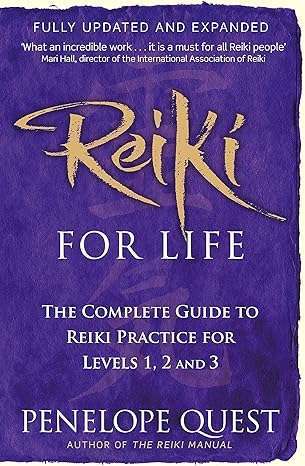Introduction
Becoming a Reiki practitioner is a transformative journey that not only empowers you to heal yourself but also enables you to offer healing to others. Reiki, the practice of channeling universal life energy for holistic well-being, has gained popularity for its gentle yet powerful effects. In this guide, we’ll walk you through the steps to become a certified Reiki practitioner and embark on a path of healing and balance.
What Is Reiki?
Before we dive into the steps, let’s briefly review what Reiki is. Reiki is a Japanese healing practice that involves the channeling of universal life energy (Ki) through the hands to promote healing, relaxation, and overall well-being. It is a non-invasive and holistic approach to health and is suitable for people of all ages and backgrounds.
Step 1: Explore Reiki
Before you commit to becoming a Reiki practitioner, take the time to explore Reiki and its principles. Read books, articles, and attend introductory workshops or classes. Understanding the philosophy and benefits of Reiki will help you make an informed decision.
Step 2: Find a Reiki Master/Teacher
To become a certified Reiki practitioner, you’ll need to receive training and attunements from a Reiki Master or Teacher. Look for a reputable and experienced teacher who resonates with you. Ask for recommendations from others who have undergone Reiki training.
Step 3: Choose Your Reiki Level
Reiki training is typically divided into three levels, each offering a deeper understanding of Reiki and expanded abilities:
- Reiki Level 1 (First Degree): This level focuses on self-healing and the basics of Reiki. You’ll learn about hand positions, energy flow, and receive the first attunement.
- Reiki Level 2 (Second Degree): At this level, you’ll delve into distant or absentee healing, learn about Reiki symbols, and receive the second attunement.
- Reiki Level 3 (Master/Teacher Level): If you aspire to teach Reiki to others, you can pursue the Master Level. It involves advanced techniques, learning the Master symbols, and receiving the Master attunement.
Choose the level that aligns with your goals and interests. Many practitioners begin with Level 1 and gradually progress to higher levels.
Step 4: Attend Reiki Classes and Workshops
Enroll in Reiki classes and workshops conducted by your chosen Reiki Master/Teacher. These sessions provide hands-on training, practice, and guidance. You’ll learn about hand positions, energy scanning, and how to perform Reiki sessions on yourself and others.
Step 5: Receive Attunements
Attunements are a vital aspect of Reiki training. They are sacred ceremonies performed by the Reiki Master/Teacher, allowing you to connect to the universal life energy. Attunements open your energy channels and enhance your ability to channel Reiki for healing.
Step 6: Practice Regularly
Practice is key to mastering Reiki. Dedicate time to daily self-healing sessions and offer Reiki to friends and family to gain experience. The more you practice, the more confident and skilled you’ll become.
Step 7: Seek Certification
Upon completing your chosen level of training and gaining practical experience, you can seek certification from your Reiki Master/Teacher. Certification confirms your proficiency in Reiki and your ability to provide healing sessions.
Conclusion
Becoming a certified Reiki practitioner is a rewarding journey that empowers you to help yourself and others on the path to healing and balance. It’s a lifelong practice of continuous learning and self-discovery. Whether you aim to integrate Reiki into your existing career or become a dedicated Reiki practitioner, this path offers profound personal and spiritual growth. Embrace it with an open heart and a willingness to share the gift of healing with the world.













